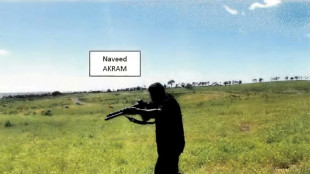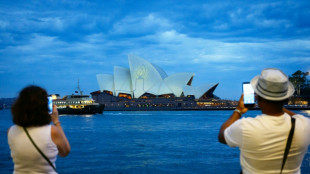

Dutch windmill village churned by overtourism debate
With its historic windmills and gabled wooden houses nestling by a meandering river, the picture-perfect and TikTok-famous area of Zaanse Schans is a must-see for any visitor to the Netherlands.
But the village of centuries-old buildings near Amsterdam has become "a national symbol of overtourism", according to local authorities, who now want to charge a hotly contested entrance fee.
The fierce debate over the 17.50-euro ($20) ticket planned for next year comes during a global backlash against mass tourism that has seen hotspots like Venice charge for day trips.
On a glorious summer day when AFP visited, long queues for the world-famous windmills snaked outside the doors and crowds shuffled over bridges, waiting in line for Instagram-ready snaps of the bucolic scenery.
Buses disgorge scores of day-tripping tourists all day long, packing into a relatively small area that is public and free to visit -- for now.
The council in nearby Zaanstad says the fee is vital to preserve the heritage buildings, which are coming under "severe pressure" from high tourist numbers.
"For several years now, the Zaanse Schans has been a national symbol of overtourism," said alderman Wessel Breunesse.
Around 2.6 million tourists visited last year, a figure set to rise to three million in coming years if nothing is done, the council says.
An entrance fee could reduce the annual volume to around 1.8 million and bring in millions of euros to preserve these historic buildings.
"Doing nothing is not an option. Without sufficient resources for adequate maintenance, the heritage will be lost in the short term (five to seven years)," said the council in a statement sent to AFP.
- Tourism-dependent economy -
What many tourists do not know until they arrive is that while many of the buildings date from the 16th century, the site itself is a recent and artificial oddity.
After World War II, traditional timber construction was in danger of dying out for good.
Eager to preserve this slice of history, local mayor Joris in 't Veld came up with a plan: he would uproot the houses and relocate them to a new protected site.
The first mill arrived in 1955, the first house a few years later. Eventually, the "Zaanse Schans" site was famous enough to be officially "opened" by Queen Juliana in 1972.
"The Zaanse Schans was never conceived as the international crowd-puller it is today, attracting millions of visitors from all over the world," noted alderman Breunesse.
But for local resident and businesswoman Ingrid Kraakman, the plan to charge an entrance fee would spell disaster, both as a citizen and for the cheese shop in which she works.
"As a resident from this area, I don't want to live behind a fence... that's not OK," the 62-year-old told AFP from her 17th-century home in the heart of Zaanse Schans.
Kraakman and her husband Ko have lived in the area for 33 years and believe an entrance fee would be a death blow for the local economy and jobs.
"There's a lot of fear," she said, estimating that around 80 percent of the local economy is dependent on tourism.
Her cheese shop is brimming with tourists, attracted by free samples and souvenirs, but she said the fee would be a major drag on spending.
A family of four would already be paying around 80 euros with parking, reducing their budget for on-site purchases, she noted.
"They don't buy cheese. They don't buy clocks. They buy a souvenir or maybe the smallest cheese there is," she told AFP.
- Referendum demand -
The Kraakmans have collected more than 2,000 signatures for a referendum on the issue, but their push has so far fallen on deaf ears in the town hall.
Aware of some local hostility, the council has pledged the site will stay free for locals and that there will be no physical fence around the area.
Although the plans are for next year, an amendment was introduced to allow for the possibility of delays. Now 2026 seems too short a deadline -- a "moonshot", said one local official on condition of anonymity.
Most tourists said the trip would be worth it even if they had to pay.
Spanish visitor Robert Duque told AFP: "It's a lovely place but sometimes it's too crowded and you don't really get to enjoy the full experience."
The 35-year-old operations manager said he would welcome the entrance fee to crimp tourist volumes.
"I think it's good, so we can stagger the arrival of guests and we can enjoy the facilities more," said Duque.
S.Taylor--PI



